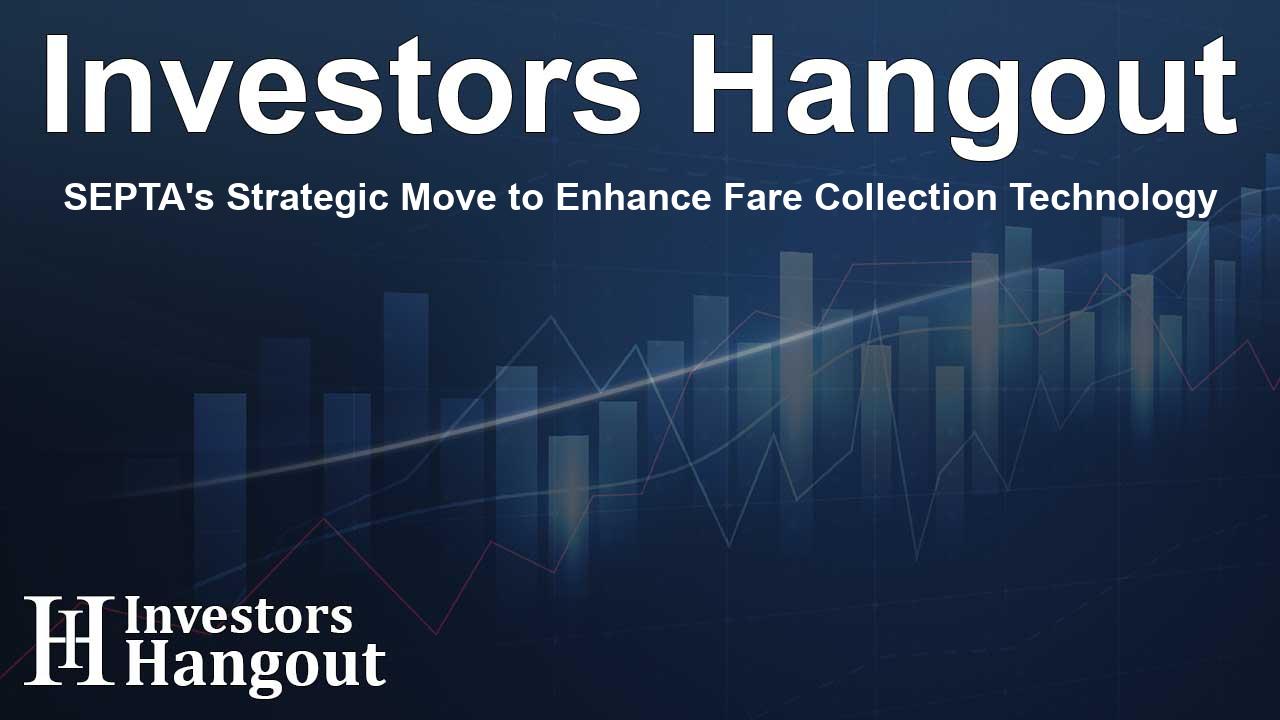SEPTA's Strategic Move to Enhance Fare Collection Technology

SEPTA Expands Fare Gate Technology Across Philadelphia
In an impactful move towards enhancing public transit security and revenue collection, the Southeastern Pennsylvania Transportation Authority (SEPTA) has decided to implement approximately 100 additional 3D fare gates in collaboration with Conduent Transportation. This initiative aims to significantly reduce fare evasion, a challenge that reportedly costs the transit authority about $30 million each year.
Strengthening Fare Collection Efforts
The installation of these advanced fare gates reinforces SEPTA's commitment to improving the rider experience by making payment processes faster and more efficient. Conduent’s 3D Fare Gate Solution will be incorporated into nine different transit stations throughout the Philadelphia area, facilitating a more robust system for monitoring fare compliance.
Innovative Payment Options at Your Fingertips
Recently, SEPTA partnered with Conduent to introduce contactless payment systems, allowing passengers to use credit and debit cards or mobile payment apps such as Apple Pay and Google Pay with ease. This new method has already proven successful, achieving over 15 million taps within just one year, translating to tens of millions of dollars in revenues. Notably, there was a record-breaking day with around 87,000 taps.
Future Installation Plans
Initially, SEPTA kicked off a pilot program featuring Conduent’s 3D fare gates at the 69th Street station, which has shown promising results with an estimated increase of $300,000 in annual sales revenue from fare collections. Following this success, the transit authority plans to expand the installation of these advanced fare gates to several other stations, including Somerset, Huntingdon, Cecil B. Moore, 11th Street, 13th Street, and others. The completion of these installations is projected by the end of 2025.
Advanced Detection Features
The technology behind Conduent’s 3D fare gates uses state-of-the-art 3D detection optical sensors. These sensors not only facilitate seamless access for paying passengers but also actively deter fare evasion, reporting anomalies that might go unnoticed with traditional fare collection systems. This innovation provides transit authorities with invaluable insights into fare evasion, helping them understand when and where fare compliance issues occur.
Broader Implications and Community Impact
Fare evasion is not merely a financial concern; it affects the overall quality of public services delivered to paying passengers. Adam Appleby, Group President of Public Sector Solutions at Conduent, elaborates on this point, stating how the decline in revenue impacts operational budgets. By employing advanced technologies such as the 3D fare gate, transit agencies can better maintain their services and ensure fairness among all riders.
Conduent's Commitment to Mobility Solutions
Operating across over 20 countries for more than 50 years, Conduent Transportation has established itself as a leader in providing comprehensive mobility solutions. Their services aim to not just streamline fare collection but also enhance the overall public transportation experience. With innovations like the 3D fare gates, the company continues to support transit authorities in fulfilling their missions effectively.
About Conduent
With a global workforce of approximately 55,000 employees, Conduent specializes in delivering advanced digital business solutions. The organization focuses on creating impactful outcomes for their clients, utilizing technologies like cloud computing and machine learning to drive innovation in various sectors. The company plays a crucial role in managing a wide array of transactions, from government disbursements to customer services.
Frequently Asked Questions
What is the purpose of installing additional fare gates?
The additional fare gates are intended to track and reduce fare evasion, helping SEPTA recover lost revenue estimated at $30 million annually.
How do the new fare gates work?
Conduent's 3D fare gates utilize innovative 3D detection sensors to facilitate quicker access for passengers while effectively detecting fare evasion attempts.
What payment options are available with the new gates?
Passengers can now use credit/debit cards and mobile payment apps like Apple Pay and Google Pay at the fare gates, enhancing convenience.
Which stations are getting the new fare gates?
The new gates will be installed at various stations, including Somerset, Huntingdon, Frankford Transit Center, and several others, as part of the rollout.
How does fare evasion impact public transportation?
Fare evasion negatively impacts operational budgets, as it reduces revenue which is essential for maintaining and improving transit services.
About The Author
Contact Hannah Lewis privately here. Or send an email with ATTN: Hannah Lewis as the subject to contact@investorshangout.com.
About Investors Hangout
Investors Hangout is a leading online stock forum for financial discussion and learning, offering a wide range of free tools and resources. It draws in traders of all levels, who exchange market knowledge, investigate trading tactics, and keep an eye on industry developments in real time. Featuring financial articles, stock message boards, quotes, charts, company profiles, and live news updates. Through cooperative learning and a wealth of informational resources, it helps users from novices creating their first portfolios to experts honing their techniques. Join Investors Hangout today: https://investorshangout.com/
The content of this article is based on factual, publicly available information and does not represent legal, financial, or investment advice. Investors Hangout does not offer financial advice, and the author is not a licensed financial advisor. Consult a qualified advisor before making any financial or investment decisions based on this article. This article should not be considered advice to purchase, sell, or hold any securities or other investments. If any of the material provided here is inaccurate, please contact us for corrections.
